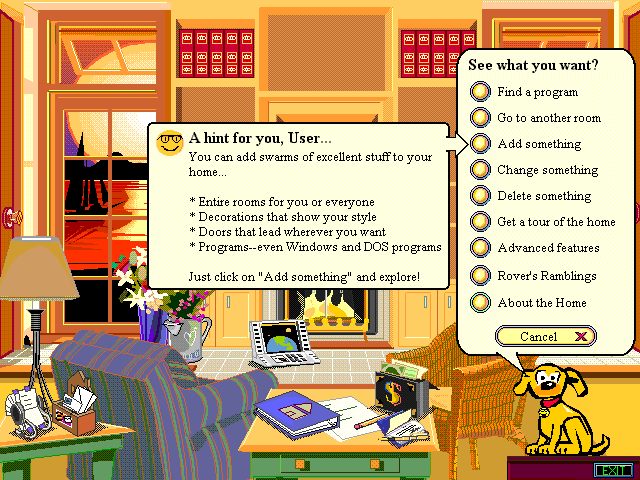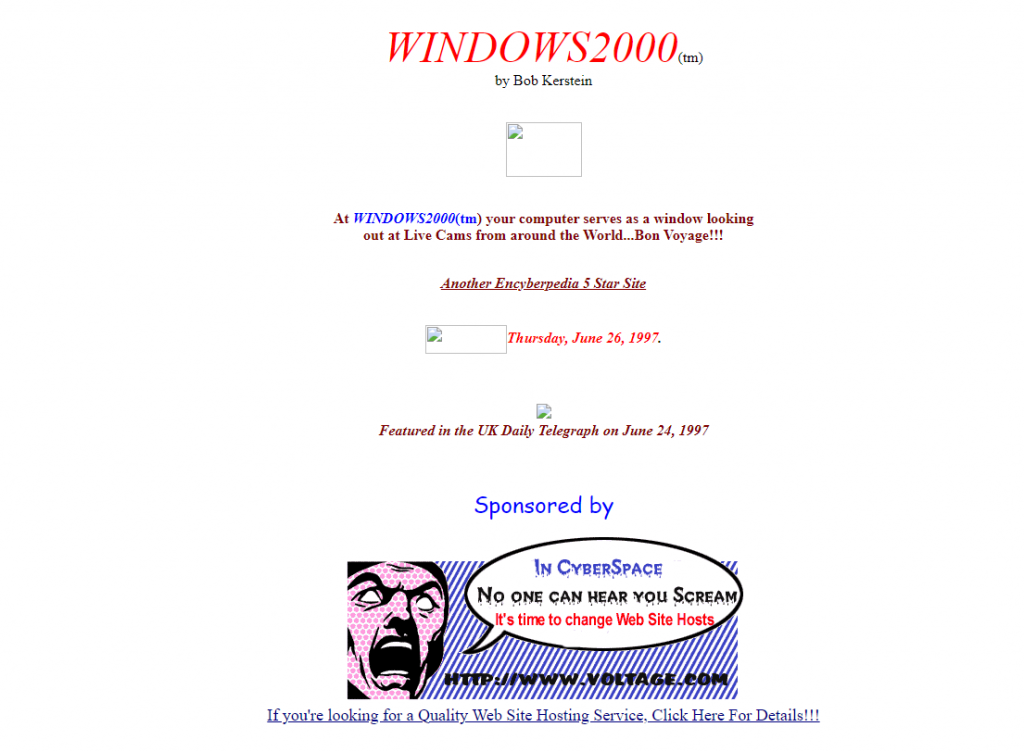What About Bob (dot com)?

If you’re reading these words, you almost certainly are due to the power of the Internet, a seemingly series of tubes that delivers information from who-knows-where directly to you, all at nearly light-speed. And it’s so commonplace at this point that you probably didn’t even give it a second thought. The Internet is as fundamental to our lives as other infrastructure; light switches turn on lights, faucets make water come out, and our computers and phones bring us stuff to read, listen to, and watch. It’s all pretty mundane.
But in the late 1990s, that wasn’t the case. If anything, the opposite was true. Many major companies — including Microsoft, arguably one of the most plugged-in tech companies in the world at the time (and still today) — didn’t really think about the Internet when building their business plans, at least not consistently. And in 1998, that almost caused a problem for Microsoft.
And then they were saved. By Bob.
You probably don’t remember Microsoft Bob, in large part because no one liked it. In 1995, Microsoft was trying to develop a new user interface for Windows, one which would seem more intuitive than the desktop environment Apple created for the Macintosh. What they came up with was a cartoon-y version of a home, all guided by a helpful animated cartoon dog named Rover, as seen above. For reasons unclear, they called the product “Microsoft Bob” and made it the centerpiece of their spring 1995 promotions. Despite the fact that the consumer Internet was only in its infancy, a product marketer decided to include getting the bob.com domain name to support this key product launch that year.
Having the domain name, though, didn’t matter — Microsoft Bob was panned by consumers and experts alike. For example, the New York Times published an absolutely scathing review of the interface, saying that the design looks like “the work of an esthetically challenged sixth-grader,” that Rover and the other guides “speak primarily through dialogue balloons, addressing you by name as incessantly as an insurance broker and offering menus with no obvious organization. This didn’t come with more functionality, either; the reviewer noted that “Bobbed letter writer cannot number pages, search for text, create uneven margins or print envelopes.” And security? Forget it. Even the passworded sections were broken, noted the Times: “if you mistype your password, Bob kindly lets you (or anyone else) change it after the third try, rendering it useless.” Less than a year after Microsoft released Bob to the world, they pulled it from the shelves forever more. And a few years later, in late 1998, they announced a new operating system: Windows 2000.
By that point, the consumer Internet was better established; while still very new, World Wide Web directories like Yahoo and AltaVista were well established. But for some reason, when Microsoft announced that Windows 2000 would be hitting the market some months later, they didn’t check to see if someone had already registered the Windows2000.com domain name. If they had, they would have noticed that an accountant and part-time antique dealer already had. As seen below, he had been using it to share links to live streaming Internet cameras around the world; “windows” to other lives, if you will.

Some of the images in that screenshot are gone; it’s from 1998 after all. But as you can see, the website wasn’t about Microsoft’s software. And importantly, it was run by a guy named Bob Kerstein.
Kerstein was an early believer in the power of the Internet; in 1996, he had a website via which he sold old stock certificates as vintage collectables. He began buying up domain names here and there, including “Windows2000.com” for his “windows around the world” idea, with the “2000” part being both a reference to the large number of windows he was sharing and also an allusion to the upcoming new millennium. It wasn’t very popular, though, and certainly not as important as the major software release by the largest software company on the planet at the time. So when Microsoft approached Kerstein asking him to work with them on promoting Windows 2000, he agreed As he’d later recount, in the short term, he cut a deal with Microsoft where “they used some of my content on their sites to help build their content brand. In exchange, they put a link back to my site that said ‘Windows 2000™” – my trademark.” But then, Kerstein realized that his domain name wasn’t going to be worth much once the year 2001 arrived, so he went to sell it. And Microsoft wasn’t happy — but they were stuck:
I decided to put my website up for auction. However, when I let my Microsoft contact know, he was less than thrilled. A short time later, I got a nasty letter from an attorney at Microsoft telling me that I couldn’t auction the site because I was using their trademark. I called the attorney and asked him to visit Microsoft’s website. When he saw the “TM” for my brand, he understood that I was well within my rights to sell the site.
Microsoft offered Kerstein a sum of money that, in his own words, “was good, but not life-changing,” so he looked around for some added value. And that’s when he noticed that Microsoft — because of the Microsoft Bob debacle — owned “bob.com.” Kerstein’s first name was Bob, so he saw this as a win-win: Bob.com would be really valuable for him and was basically worthless for Microsoft. So Kerstein offered a trade — he’d give Microsoft the Windows2000 domain name and in exchange, they’d give him the good, but not life-changing money, and Bob.com.
Microsoft agreed. Kerstein used his namesake website as a portal for gifts for years (as seen here), including a note that “We are Buyers and Sellers of Collectible Stock Certificates!” (Why mess with success?) Microsoft, having hopefully learned its lesson, hasn’t announced a consumer brand since without first checking to see if someone else had the domain name.
Bonus fact: The last part of a domain name — for example, the .com part of NowIKnow.com — is called a “top-level domain,” or “TLD.” There are some (.com being the most prominent example) that are supposed to signal what type of organization owns the name, with .org supposed to be used by nonprofits and .edu supposed to be used by educational institutions. But there’s another category: country-specific TLDs. The United States has .us, the United Kingdom has .uk, Canada has .ca, etc. For the small European nation of Montenegro, that’s been pretty valuable — it’s TLD is “.me,” and it brings in millions of dollars a year. But the people of Montenegro didn’t always have that TLD. Before 2003, Montenegro was part of Yugoslavia, and they used Yugoslavia’s TLD before transitioning to its own in 2007. As a result, in that year, the domains switched from .yu. to .me
From the Archives: The Prisoner Who Emailed Himself Free: The main story has nothing to do with this. The bonus item, however, is spot on.
